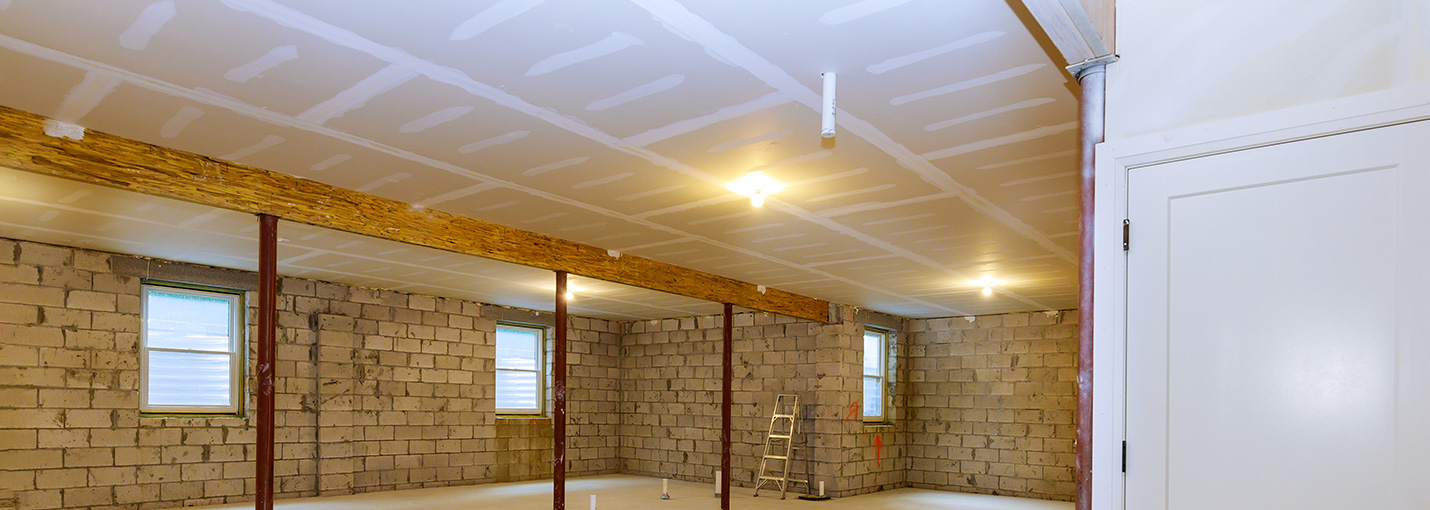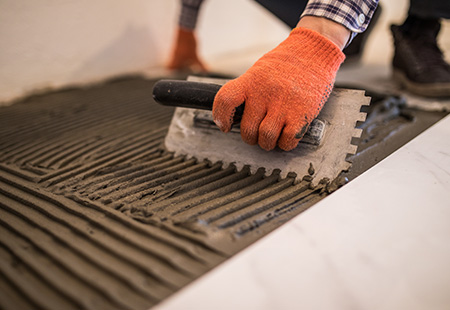The word asbestos, in the modern context, has a strongly negative connotation. Most people associate asbestos with dangerous health problems, even if they don’t know exactly what it is or why it is harmful. Legal pressure against the use of asbestos gradually built up over the decades in the 20th century, with steps moving toward limiting or banning its use in most applications being taken in earnest in the 1970s and ‘80s. Efforts continue to get it fully banned around the globe.
Asbestos was an incredibly strong mineral that resisted fire, rust, acid, electricity and decay.
What is often lost to history, however, is the fact that asbestos was extremely useful. It had been put to work in thousands of applications, and it was incredibly effective for a variety of purposes. When you combine its effectiveness with the fact that it was cheap and readily accessible, it’s no surprise that companies in the asbestos industry fought so hard to keep it legal for so long.
Make no mistake – it’s great news that the use of asbestos has been heavily regulated in the United States, but there was a need to find replacement options to fill in where asbestos was being removed. This article will take a look at some of the ways asbestos has been replaced in the years since the laws started to go into effect.
Why Was the Use of Asbestos So Common?
The use of asbestos became widespread simply because it is an incredible mineral that has virtually countless potential uses. The natural properties that asbestos brings to the table are hard to find elsewhere, and as a result, companies leaned on it for a long list of applications (more on that in a moment).
Asbestos fibers have a stronger tensile strength than steel.
Some of the specific properties that asbestos could deliver included impressive strength, surprising flexibility and lasting durability. Even if you have never manufactured anything in your life, it’s not hard to imagine how things like strength and durability would be desirable traits. Once it became common practice to use asbestos in certain materials, product developers continued to find more and more ways to put its unique collection of properties to use for their benefit. As a result, asbestos was seemingly everywhere decades ago, and it played an active role in modern life.
Asbestos has long been used by humans for its ability to withstand heat and flame.
One of the other traits of asbestos that led to its popularity is resistance to heat. In settings where high temperatures need to be managed, asbestos was often one of the first options put on the table. When we look below at some of the many ways asbestos came to be used, you’ll note that many of them involve heat in one form or another.
When mining technology advanced, asbestos became cheap and plentiful.
While the functional uses of asbestos were the driving factor in its popularity, it would be a mistake to ignore the important role of availability in this discussion. Simply put, asbestos was easy to get and affordable, which is a critical piece of the puzzle, as well. Knowing they could source it abundantly and for a low price, businesses did not hesitate to put it to use wherever it made sense.
Do You Qualify For Compensation?
Quickly and easily find out how you were exposed by searching W.A.R.D., the largest asbestos database on the planet.
FREE SEARCH >

Traditional Asbestos Applications
Asbestos continues to be used today in certain commercial settings, but it is no longer allowed to be used in any consumer-facing products in the United States. Just a few decades ago, however, the story was much different, and asbestos could be found in a long list of everyday products. Some of those included the following:
Insulation
This is one of the biggest places where asbestos will be found today, as it has been locked away in the walls of millions of homes that were built in the middle of the 20th century. As those homes are remodeled or renovated, the walls are frequently opened up and homeowners or contractors are faced with the reality that the insulation may contain asbestos.
Cement
Using asbestos in the production of cement was a common practice although it created a potentially harmful work environment for those in and around the cement factories.
Roofing
The ability of asbestos to handle high-heat environments made it an excellent pick for use in roofing materials on both residential and commercial structures.
Brake pads
It was even common to see asbestos used in the production of brake pads, where the combination of heat resistance and durability allowed it to perform well.
Styrofoam
Again, it comes back to the thermal insulation provided by asbestos, which made it a common option in the production of Styrofoam.
This quick list is, of course, only a very partial accounting of the many places where asbestos could be found.
Many industrial workers in factories, refineries, mechanical shops, metalworks and shipyards were exposed before the mid-1980s.
“It seems the dirtier the job, the more asbestos you were exposed to.”
The latency of asbestos exposure
Asbestos diseases have a long latency, meaning you won’t know whether you have an asbestos-related disease until twenty to even fifty years after you were first exposed.
In many cases workers who tested negative for asbestos damage in the 1990s eventually developed asbestosis, mesothelioma and other asbestos-related diseases.
Asbestos: a slow and silent killer
Because asbestos also has no smell or taste, and generally does not produce an immediate reaction, people may not know they’re breathing asbestos. Asbestos fibers can be microscopic.
But the American Lung Association notes that there is a risk that once inhaled, some asbestos fibers will never leave the body.1
!
If you may have been exposed to asbestos, speak with your healthcare provider about tests and screening to help detect the presence of asbestos fibers and asbestos-related damage.
Second-hand asbestos exposure
Unfortunately, many workers’ families and other household members were exposed to asbestos as well, as asbestos was brought home daily in neighborhoods across the U.S. on work-clothing. This is often known as secondary or second-hand asbestos exposure (or domestic / household family asbestos exposure).
1 in 5
In studies of asbestos disease, 1 in 5 cases of asbestos exposure were caused by secondary asbestos exposure.4
A Variety of Effective Replacements for Asbestos Containing Materials (ACM)
Without the option of turning to asbestos for a solution to their manufacturing needs, businesses had to come up with various alternatives to do the same job – or get as close to it as possible. This is not a case where a single mineral or material was able to step in and be a replacement for asbestos across the board. Rather, asbestos was replaced on a case-by-case basis, with different applications calling for different substitutions.
Below are a few examples of how the problem has been overcome.
Products made with alternatives to asbestos:
  | Roofing. Rather than using asbestos in roofing materials, manufacturers were able to turn to synthetic fibers to get the performance they required. These synthetics can be designed to offer the desired characteristics without the health hazards that come with asbestos use. |
  | Cement. Replacing the asbestos in cement was a big one because of the volume of cement that is produced and how much asbestos was traditionally used in that process. A common solution was just to turn away from cement pipe altogether, instead opting for choices such as concrete pipes, cast iron pipes, and various plastic options. |
  | Fire-resistant clothing. Believe it or not, firefighters used to wear protective gear that included asbestos because it was so effective at shielding them from the heat they would encounter. It was also used in fire blankets, which could be laid over small blazes to extinguish them. This is no longer the case, however, so synthetic fibers have been put to use for the same role. |
The Many Dangers of Asbestos to Human Health
Respiratory illnesses, cancers of the lung, throat and colon, and the highly aggressive cancer mesothelioma.
Exposure to asbestos can create a particularly dangerous situation for human health. Research indicates that more than 100,000 people around the world die each year from diseases related to asbestos. Specifically, it’s the breathing in of the fibers that float in the air where asbestos is present that can do damage over time. When those fibers make their way into the lungs, they tend to adhere to the walls of the lungs and accumulate. Eventually, very serious health consequences can result, such as lung cancer and mesothelioma. Even if cancer does not develop, a condition known as asbestosis can make it hard to breathe and reduce quality of life.
Part of the problem with this topic is that asbestos isn’t easily detectable in the air. There is no asbestos smell emitted by the fibers, and they are too small to see with the naked eye. If asbestos is disturbed and fibers fly up into the air, they can float there for multiple days before settling back down. A person who spends significant amounts of time in the presence of air with asbestos is likely to develop health problems over the long run.
Telling the difference between asbestos containing materials (ACM) and alternative substances.
It’s critically important to be able to tell the difference between asbestos and one of the materials that has been used to replace it through the years. If you are doing some work on an old building, for instance, figuring out what is harmful asbestos and what is not will inform how you proceed and what steps are necessary to keep everyone safe. Turning to a professional is the best way to differentiate between asbestos and its replacements.
AsbestosClaims.Law
AsbestosClaims.law is your comprehensive resource for all things asbestos. We hope this information helps you.
If you have any additional questions or concerns related to asbestos, check out our website and YouTube page for videos, infographics and answers to your questions about asbestos, including health and safety, asbestos testing, removing asbestos from your home and building, and legal information about compensation for asbestos injuries.
If you believe that your home or other building was contaminated with asbestos, you could be entitled to significant compensation—money you could use to cover the costs of asbestos removal services, pay for medical treatment, and preemptively protect your physical well-being.
All without filing a lawsuit.
If you’d like help with filing a claim, please get in touch by email at [email protected], or call or text us at (833) 4-ASBESTOS (427-2378) or (206) 455-9190. We’ll listen to your story and explain your options. And we never charge for anything unless you receive money in your pocket.
In addition to legal claims, veterans disability, social security and employment protection like workers compensation, FELA and The Jones Act for maritime workers, there are asbestos trusts that have been set up to compensate those harmed by asbestos without having to file a lawsuit.
If you have any additional questions or concerns related to asbestos, including testing for exposure or how to file a claim, please get in touch by email at [email protected], or call or text us at (833) 4-ASBESTOS (427-2378) or (206) 455-9190.
Park, Seung-Hyun. Types and Health Hazards of Fibrous Materials Used as Asbestos Substitutes. Safety and Health at Work, Volume 9, Issue 3, September 2018, Pages 360-364. https://doi.org/10.1016/j.shaw.2018.05.001.
1 https://www.lung.org/clean-air/at-home/indoor-air-pollutants/asbestos
2 Tompa E, Kalcevich C, McLeod C, Lebeau M, Song C, McLeod K, et al. The economic burden of lung cancer and mesothelioma due to occupational and para-occupational asbestos exposure. Occup Environ Med 2017; 74: 816-22.




